
Minamoto no Yoshitsune was a commander of the Minamoto clan of Japan in the late Heian and early Kamakura periods. During the Genpei War, he led a series of battles that toppled the Ise-Heishi branch of the Taira clan, helping his half-brother Yoritomo consolidate power. He is considered one of the greatest and the most popular warriors of his era, and one of the most famous samurai in the history of Japan. Yoshitsune perished after being betrayed by the son of a trusted ally and was labelled as a tragic hero.

0-6-0 is the Whyte notation designation for steam locomotives with a wheel arrangement of no leading wheels, six powered and coupled driving wheels on three axles, and no trailing wheels. Historically, this was the most common wheel arrangement used on both tender and tank locomotives in versions with both inside and outside cylinders.
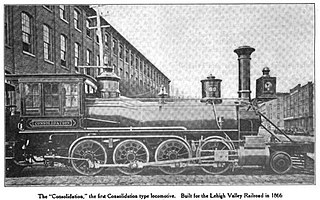
Under the Whyte notation for the classification of steam locomotives, 2-8-0 represents the wheel arrangement of two leading wheels on one axle, usually in a leading truck, eight powered and coupled driving wheels on four axles, and no trailing wheels. In the United States and elsewhere, this wheel arrangement is commonly known as a Consolidation, after the Lehigh and Mahanoy Railroad’s Consolidation, the name of the first 2-8-0.

The Class C62 (C62形) is a type of 4-6-4 steam locomotive designed by Hideo Shima and built by the Japanese National Railways (JNR). The "C" classification indicates three sets of driving wheels. The C62 was rebuilt with the boilers of older Class D52 2-8-2 locomotives.

Kutchan is a town located in Shiribeshi Subprefecture, Hokkaido, Japan. Kutchan lies slightly north of the volcano Mount Yōtei, and is approximately 50 kilometers west of Sapporo. The subprefecture government offices are located in this town, making it the capital of the subprefecture.
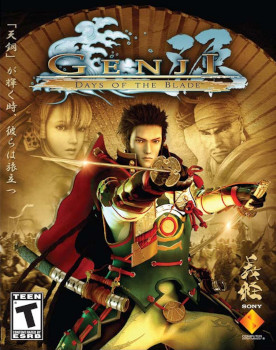
Genji: Days of the Blade, known in Japan as Genji: Kamui Sōran, is an action game that was released for the PlayStation 3, and the sequel to Genji: Dawn of the Samurai.

NISEKO TOKYU Grand HIRAFU is a ski resort located in the Hirafu area of Kutchan, Abuta District, Hokkaidō, Hokkaidō, Japan. It is a vast snow resort stretching from Niseko Annupuri’s summit to its base, and it is famous for its fine-quality powder snow. Because of this, Hirafu is frequented by many non-Japanese skiers and snowboarders.

The Class DD51 (DD51形) is a B-2-B wheel arrangement diesel-hydraulic locomotive type operated in Japan since 1962. 649 locomotives were built between 1962 and 1978 by Kawasaki Sharyo, Hitachi, and Mitsubishi. The class was designed for mainline passenger and freight use with more power than the D51 and a higher maximum speed than the C62 steam locomotive classes. This was achieved by installing two 1,100 hp engines in an 18 metre long centre-cab design, unusual for mainline operation. The V12 DML61 engines were developed from the 6-cylinder inline DMF31 engines used in the Class DD13 locomotives. As of 1 April 2016, 29 locomotives remained in operation.
The Horonai Railway was a Japanese government-managed railway which was among the first to be built in Hokkaidō. Established in 1869, it was sold off to the private sector twenty years later. Some of the infrastructure of the Horonai Railway remains in use today, as the Temiya Line and Muroran Main Line, connecting Minami-Otaru Station and Iwamizawa Station; these began operations in the 1880s.
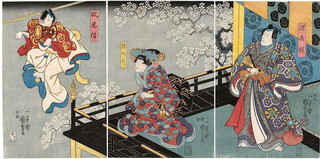
Yoshitsune Senbon Zakura (義経千本桜), or Yoshitsune and the Thousand Cherry Trees, is a Japanese play, one of the three most popular and famous in the kabuki repertoire. Originally written in 1747 for the jōruri puppet theater by Takeda Izumo II, Miyoshi Shōraku and Namiki Senryū I, it was adapted to kabuki the following year.

The Japanese Class 7170 steam locomotive was among the first trains to be used in Hokkaido, and was utilized alongside the JNR Class 7100 on the Horonai Railway.

The Sapporo Beer Museum is a museum located in the Sapporo Garden Park in Higashi-ku, Sapporo, Hokkaidō, Japan. Registered as one of the Hokkaidō Heritage sites in 2004, the museum is the only beer museum in Japan. The red-brick building was erected originally as a factory of the Sapporo Sugar Company in 1890, and later opened as a museum in July 1987. The building also houses the Sapporo Beer Garden in the south wing.

The Hamanasu (はまなす) was an overnight express train service in Japan operated by Hokkaido Railway Company, which ran from Aomori to Sapporo via the Tsugaru Line, Kaikyō Line, Esashi Line, Hakodate Main Line, Muroran Main Line, and Chitose Line. The journey took approximately seven and a half hours. Following the withdrawal of the Ginga overnight express service between Tokyo and Osaka in 2008, the Hamanasu became the only locomotive-hauled express service in Japan. The service was discontinued in March 2016 and some cars were donated to the State Railway of Thailand and refurbished as excursion train named Royal Blossom.

The Class 9600 (9600形) is a type of 2-8-0 steam locomotive built by Japanese Government Railways from 1913. The Class 9600 was the first type of locomotive to be mass-produced by Japanese manufacturers. The Class 9600 were popularly known as Kyuroku (nine-six), and were extensively used for freight service throughout Japan.
They were numbered 9600-9699, 19600-19699, 29600-29699, 39600-39699, 49600-49699, 59600-59699, 69600-69699 and 79600-79669. All 770 remained in service until the 2nd of March 1976, when all steam-hauled service on JNR's network has been phased out.

The NZR Y class was a class of three 0-6-0T tank steam locomotives. Built by the Hunslet Engine Company for the Public Works Department in 1923, all three were sold to NZR between 1938 and 1945.
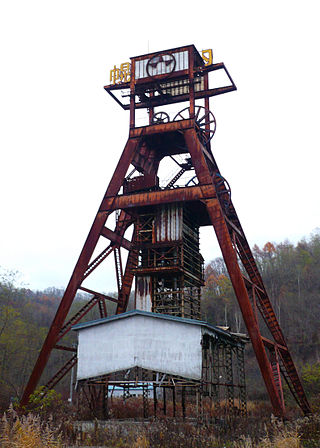
The Horonai coal mine is the oldest mine of the Ishikari coalfield of the Sorachi (Mikasa) mining region on the Japanese island of Hokkaido. Since its privatisation in 1889, the mine came under the management of the Hokutan company until its closure in 1989.
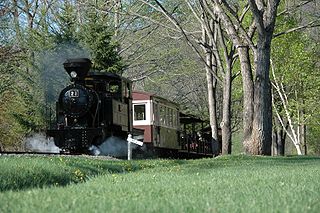
The Hokkaido Maruseppu Recreation Forest Park Railway or Maruseppu Forest Park Ikoi-no-Mori Railway is an approximately 1.24 miles (2.00 km) long narrow gauge heritage railway with a track gauge of 2 ft 6 in near the Japanese City of Engaru near Mombetsu in the Okhotsk Subprefecture on the island Hokkaidō.

The NS 7100 was a series of tank engines of the Dutch Railways (NS) and its predecessors Maatschappij tot Exploitatie van Staatsspoorwegen (SS), Hollandsche IJzeren Spoorweg-Maatschappij (HSM) and Noord-Friesche Locaalspoorweg-Maatschappij (NFLS).

The KiHa 80 series (キハ80系) was a diesel multiple unit type that operated on express services from 1960 to 2002, under Japan National Railways and later under JR Hokkaido and JR Central. Two variants were initially built: the KiHa 81 series (キハ81系) to replace the then steam-operated Hatsukari services in 1960, and the KiHa 82 series (キハ82系) for other services from 1961 to 1967; the KiHa 81 series sets would receive the fourth Blue Ribbon Award for outstanding design from the Japan Railfan Club.

The Otaru City General Museum (小樽市総合博物館) is a museum located in Temiya 1-chome, Otaru, Hokkaido, Japan, which features exhibits related to the history and nature of Hokkaido, transportation in the area, and science.






















